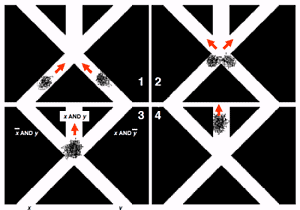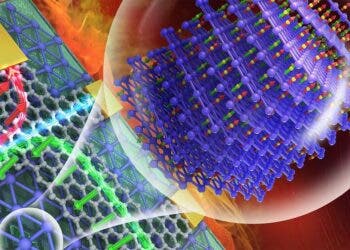Computing using unconventional methods found in nature has become an important branch of computer science, which might aid scientists construct more robust and reliable devices. For instance, the ability of biological systems to assemble and grow on their own enables much higher interconnection densities or swarm intelligence algorithms, like ant colonies that find optimal paths to food sources. But its one thing to get inspired by nature to build computing devices, and another to use nature itself as the main computing component.

Previously, scientific groups have used all sorts of natural computation mechanisms like fluids or even DNA and bacteria. Now, a team of computer scientists, lead by Yukio-Pegio Gunji from Kobe University in Japan, have successfully created a computer that exploits the swarming behaviour of soldier crabs. Yup, that’s nothing you hear every day.
For their eccentric choice of computing agent, the researchers’ inspired themselves from the billiard ball computer model, a classic reversible mechanical computer, mainly used for didactic purposes first proposed in 1982 by Edward Fredkin and Tommaso Toffoli.
The billiard ball computer model can be used as a Boolean circuit, only instead of wires it uses the paths on which the balls travel, the information is encoded by the presence or absence of a ball on the path (1 and 0), and its logic gates (AND/OR/NOT) are simulated by collisions of balls at points where their paths cross. Now, instead of billiard balls think crabs!
“These creatures seem to be uniquely suited for this form of information processing . They live under the sand in tidal lagoons and emerge at low tide in swarms of hundreds of thousands.
What’s interesting about the crabs is that they appear to demonstrate two distinct forms of behaviour. When in the middle of a swarm, they simply follow whoever is nearby. But when they find themselves on on the edge of a swarm, they change.
Suddenly, they become aggressive leaders and charge off into the watery distance with their swarm in tow, until by some accident of turbulence they find themselves inside the swarm again.
This turns out to be hugely robust behaviour that can be easily controlled. When placed next to a wall, a leader will always follow the wall in a direction that can be controlled by shadowing the swarm from above to mimic to the presence of the predatory birds that eat the crabs. ” MIT tech report
Thus, the researchers were able to construct a computer which uses solider crabs for transmitting information. They were able to build a decent OR gate using the crabs, their AND-gates were a lot less reliable however. A more crab-friendly environment would’ve rendered better results, the researchers believe.
The findings were published in the journal Emerging Technologies.






